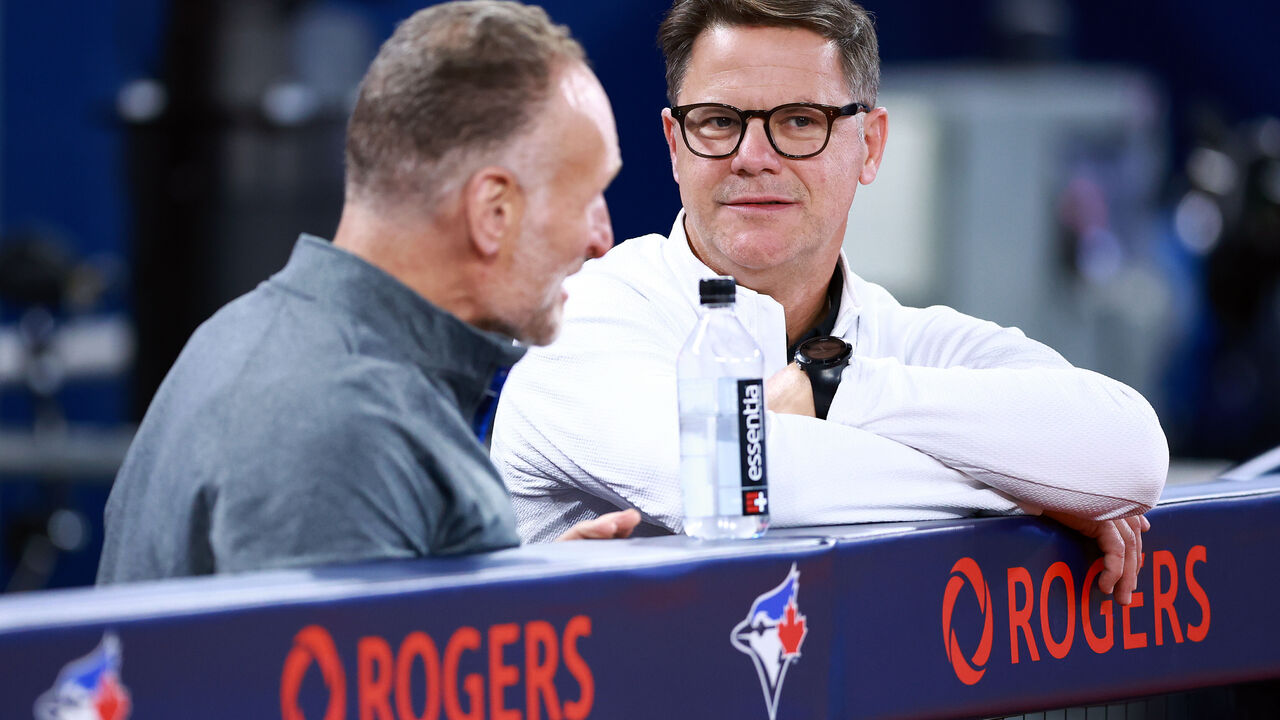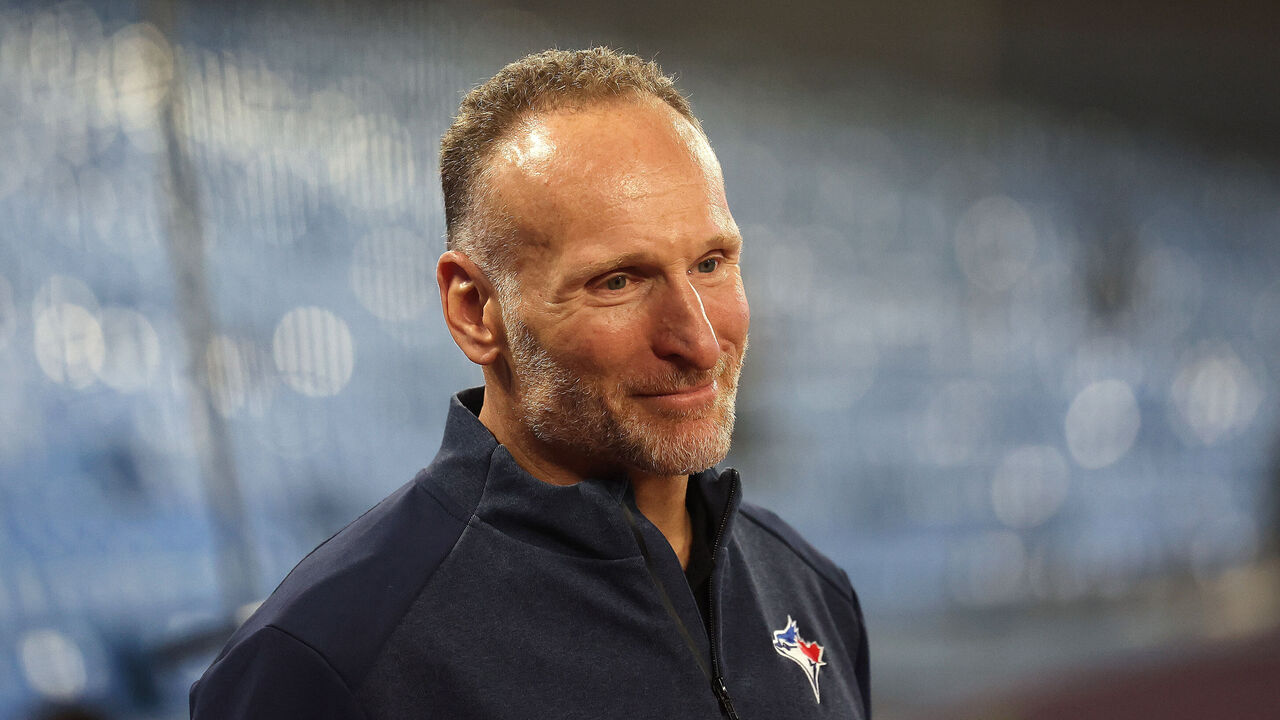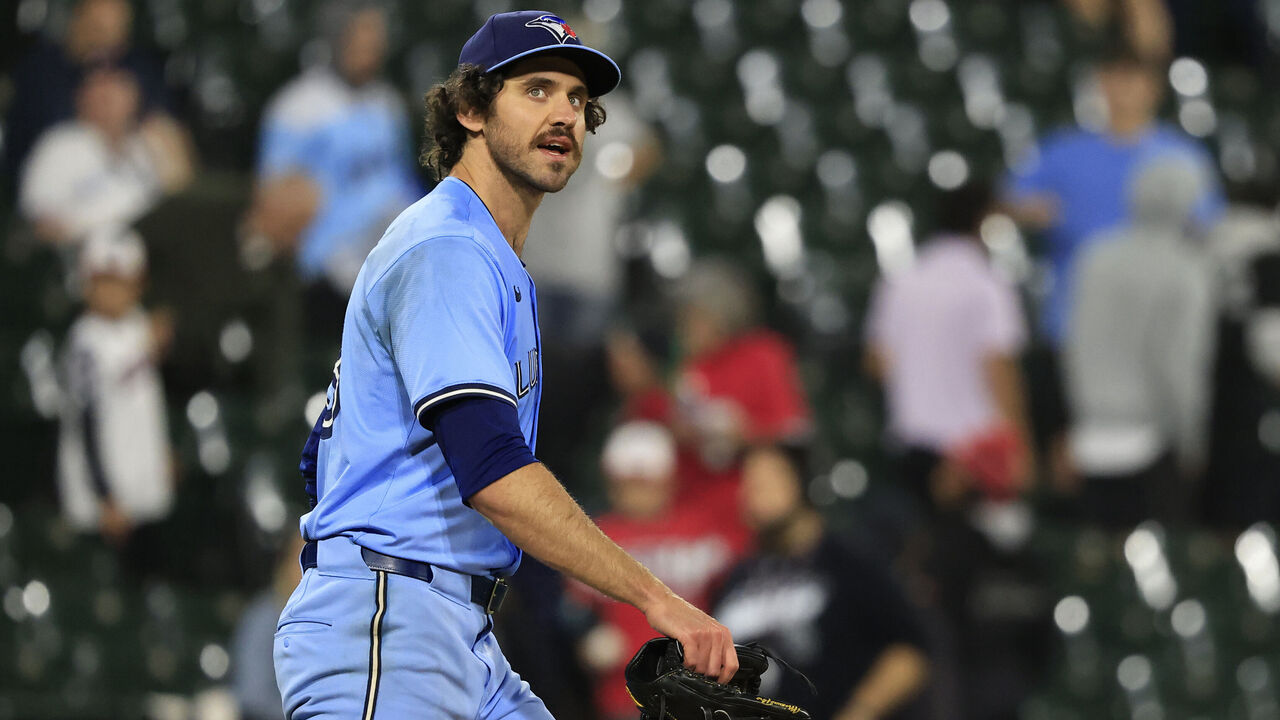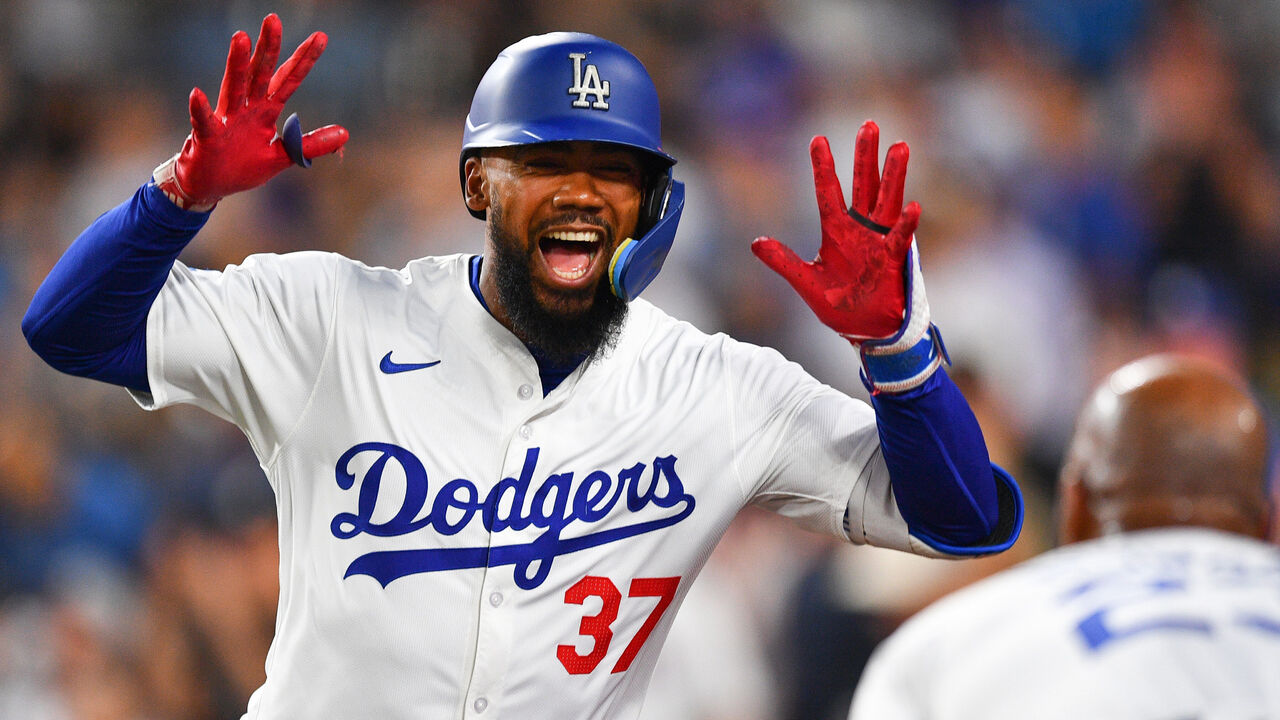Assessing what the 2025 Blue Jays could look like
The Blue Jays faced a fork in the road at the trade deadline.
Clearly out of contention, they could either go down the path of a full teardown - perhaps beginning an extended tanking period like the Astros or Cubs of the 2010s - or they could elect to move players on short-term contracts and veterans not in their 2025 plans.
They chose the latter path, operating under the belief they could run it back at least one more season with faces of the franchise Vladimir Guerrero Jr. and Bo Bichette in their final year before free agency.
Only time will tell if this was the prudent path, but the focus is already on 2025 and trying to rebound quickly.

Toronto will use the final month of the season to assess the players it has. It'll then begin to put in place an offseason strategy that's better than the one it tried last winter, which didn't have a strong Plan B after losing out on Shohei Ohtani.
Let's see what such a plan could look like.
Follow the money
The Blue Jays will need external help, so their budget size will be key.
Toronto ranked ninth in 2024 payroll according to Spotrac ($229 million) and is 13th in 2025 commitments ($122.5 million).
I project the Blue Jays at $195 million in Opening Day payroll for 2025 based on those existing commitments, estimating contracts for arbitration-eligible players (and filling the rest of the roster with minimum-salaried players), and other 40-man roster expenses. But that number excludes any external free-agent signings.
I also project the club to offer contracts to six players eligible for arbitration, including a hefty payout to Guerrero, but down from the 12 arbitration-eligible players Toronto paid last year.
The Blue Jays should have some flexibility, but they have considerable sums tied in veteran players, including some in decline like George Springer.
If Rogers allows the front office to increase payroll at a similar rate as the last two years, Toronto will be over the tax threshold in 2025, which seems unlikely.
Blue Jays president Mark Shapiro told reporters after the trade deadline that the club doesn’t "commit payroll in August," but added he didn't anticipate "any large-scale pullback on payroll."

"When you lose, your sales are impacted," Shapiro said. "That said, lower ticket sales will have a very marginal impact, if any" on roster decisions.
While stadium renovations added additional revenue streams, and while attendance has been strong this year, the Blue Jays have the fourth-greatest attendance decrease (3,674) because of reduced capacity.
If we project smaller payroll growth while keeping Toronto under the luxury tax, that gets us to a $240-million budget. That's about $45 million to work with in free agency. (While signing Guerrero to an extension ought to be a priority, I'm working under the assumption Guerrero and Bichette will test free agency.)
While the Blue Jays ought to have some flexibility, they need to create more to add impact players. That brings us to the next move.
A radical trade
Baseball doesn't often see the kind of trade where a team attaches a prospect in a deal to move an unproductive contract to free up payroll space. But the Blue Jays aren't in a typical situation.
They're trying to rebound quickly with a front office perhaps running out of time and patience from ownership. By Opening Day 2027, the club could be without three-fifths of its rotation and Bichette and Guerrero.
The Blue Jays should try and move Springer and the two years and $48.3 million remaining on his contract this winter.
His slugging and production are in decline for a fourth consecutive season, and that decline's now accelerating. He's a below-average hitter for the first time in his career (96 wRC+), and at age 35 (he'll hit that mark Sept. 19), it's unlikely he'll be the hitter he once was.
While Springer isn't a complete zero, he's estimated to produce 3.0 total WAR over the next two years, which is worth $27 million on the open market. That means Toronto's about $21.3 million underwater on Springer's deal through 2026.
The Blue Jays would have to attach a prospect with a 50 future value (FV) grade to balance the negative value of Springer's contract, according to FanGraphs' prospect values. Since top pitching prospect Ricky Tiedemann (50 FV grade) isn't in 2025 plans after undergoing Tommy John surgery, we'll attach him in order to move Springer to a club with payroll space interested in adding a high-upside prospect.
That brings our estimated free-agent budget to $69.3 million for the coming winter.
Some (mostly) good news: the rotation
The most difficult - and expensive - roster component to build externally in the majors is a competent rotation. So the Blue Jays can feel at least OK - perhaps good! - about the pitchers they have under control entering next season.
One reason to not embark on a complete rebuild this summer was that rotation fixtures José Berríos, Kevin Gausman, and Chris Bassitt are all under control next year. Bassitt is a free agent after 2025, Gausman after 2026, and Berríos is signed through 2028 (though he can opt out after 2026).
They're aging but they're durable.

While they're down from 2023 when the rotation ranked fourth overall in ERA (3.85) and sixth in WAR (12.8), the starters have still logged the fifth-most innings in the majors. Their ERA (4.14, 16th) and WAR (8.9, 18th) are middle of the pack, but they rank fourth in ERA (3.39) over the last month. Part of that has been the emergence of rookie Bowden Francis, who's locking himself into being a rotation fixture with his excellent run.
Beyond him, Yariel Rodríguez, while inconsistent, possesses bat-missing stuff and room to grow.
Further, pitcher Jake Bloss was perhaps the top prospect netted in the Yusei Kikuchi deadline trade and figures to compete for a rotation spot next year.
Toronto's 2025 rotation looks like this at the moment:
- Gausman
- Berríos
- Bassitt
- Francis
- Rodríguez
Bloss and lefty prospect Adam Macko (with health) are candidates to compete and provide depth. The enigma that is Alek Manoah is on the shelf for much of next season following elbow surgery.
The Blue Jays could use more depth, but they can feel reasonably good about this group as is.
Bullpen issues
Toronto needs relief help in a massive way. The Jays rank 28th in relief ERA (4.75), 30th in FIP (4.92), and 30th in reliever WAR (-2.1).
They traded away a number of bullpen arms at the deadline - as they should have. Jordan Romano has dealt with injuries and seems uncertain, or perhaps unlikely, to be tendered a contract in arbitration. Arbitration-eligible righty Erik Swanson has struggled mightily, too.

The lone bright spot in the bullpen is Chad Green, who's owed $10 million next season. He's pitched well in the closer role since the club traded Yimi García.
But rather than trade away a key lineup cog like Teoscar Hernández to bolster the bullpen as it did two years ago (with Swanson), the club should allot a significant portion of its free-agent budget here.
There's a deep group of effective arms available in Chris Martin, Tommy Kahnle, Kenley Jansen, David Robertson, Aroldis Chapman, Paul Sewald, García, Tanner Scott, and Kirby Yates, among others.
According to Spotrac's market-value estimates, reuniting with García (at $5.3 million per year on a two-year deal) and adding Scott - an excellent reliever - (at $15.8 million per season on a four-year deal) would fit in the budget.
The back of the bullpen could look something like this:
- Closer: García
- Setup LHP: Scott
- Setup RHP: Green
I'd also add Ross Stripling ($1.3 million) as a long-relief/spot-starter option. While uneven this year, he possesses a 5.5% career walk rate.
Brendon Little and Ryan Burr (29.3% CSW) will provide pre-arb, middle relief innings.
But that's only half a bullpen. More arms are needed. But these upgrades would result in a number of added wins, and could have an outsized impact given the nature of close games.
Powering up
It's time for Toronto to reverse its recent preference for gloves over bats. The approach isn't working.
The Blue Jays' run differential by year is in a downward trend: +183 in 2021 (fifth in MLB), +91 in 2022 (seventh), +71 in 2023 (12th), and –66 this year (24th).
The trend's tied to a power outage.

The Blue Jays hit 262 home runs in 2021 and scored 846 runs. Those numbers ranked first and third in MLB, respectively. Their production declined to 200 homers (eighth in MLB) and 775 runs (fourth) in 2020, 188 homers (16th) and 746 runs (14th) last season, and the club's on pace for 162 home runs (24th) and 678 runs (19th) this season.
Historically, teams don't compete for an AL East title without being able to mash.
In examining all of the AL East division winners of the wild-card era (1995-present), no team to date had a below-average lineup in terms of OPS+, which adjusts for ballparks and run-scoring environments.
The average AL East champion owns a 109.3 OPS+ since 1995, about 10% better than league average. The average AL East champion in that span hits 209.2 home runs per season and scores 829.7 runs.
The Blue Jays cleared all of those benchmarks in only two seasons in the wild-card era: 2015 - their only division title during that period - and 2021, their best run-differential season of the Shapiro-Ross Atkins era.
In short, the Blue Jays need more run-scoring capability.
Internal help
Let’s first focus on what the Blue Jays may have in 2025 with respect to young, internal options and build from there.
They chose high-floor, close-to-the-majors prospects in their deadline returns partly because they wanted players who can help immediately. They need them to.
One player acquired at the deadline who'll likely be featured is Joey Loperfido. While he got off to a poor start after an avalanche of strikeouts, the former Astros prospect offers power, speed, and defensive versatility. He can play any outfield position and first base, and could be something of a poor man's Cody Bellinger with his left-handed bat.

From their own farm system, Spencer Horwitz has been one of the few positive developments of the season. While he owns only modest power, he sports a 124 wRC+ thanks to a blend of an above-average batting eye and bat-to-ball skills. He's hit at every stop. The problem is he's not really a second baseman; his glove fits better at first.
Another positive internal development story is that of journeyman Ernie Clement, who's on track for a 2-WAR season. He's learned to tap more into pull-side power and he helps at any infield position.
Second baseman Will Wagner, also acquired in the Kikuchi trade, is another left-handed bat showing promise who deserves a long look early next season. While he's older for a prospect at 26, he's also hit at every stop.
And don't forget: Orelvis Martínez, Toronto's top power-hitting prospect, will return from a PED suspension next year.
That's at least five young, pre-arbitration players who ought to be considered for regular playing time or platoon roles next year. They join entrenched regulars Guerrero, Bichette, Daulton Varsho, and Alejandro Kirk, who'll return as the primary catcher.
While the deadline and some internal options have increased the club's depth, the Blue Jays need external help.
Big-splash suggestions
One obvious and plausible free-agent fit: Orioles outfielder Anthony Santander.
He's a switch-hitting power threat on pace to exceed 40 home runs this year. He's posted three straight seasons of excellent wRC+ numbers: 122, 119, and 131. He'll enter his age-30 season next year, making him young for a free agent.
He's unlikely to remain in Baltimore and will fly a bit under the radar as other large-market clubs bid on Juan Soto and Pete Alonso.

Spotrac places Santander's open-market value at five years, $89 million, figures the Jays should absolutely be in on.
But Toronto could still use another lineup fixture - we're trying to dream big and win the AL East, after all.
Third baseman Alex Bregman would be ideal as a two-way, impact player. Division winners require these types of players, and the Jays value them, too, as seen with the Matt Chapman trade.
Statcast projects Bregman would have hit more home runs as a Blue Jay this season (26) versus his output in Houston (21) due to home park factors and Bregman's fly-ball, pull-heavy profile.
Spotrac estimates Bregman's contract value at four years and $119 million, and the Springer-Tiedemann trade is designed to make room for such a player. Bregman, who'll turn a relatively young 31 in March for a free agent, is projected to be a 3-3.5 WAR player over the new few seasons by FanGraphs.
Should Bregman be too rich, Christian Walker's another option. But adding another first baseman may require Guerrero to play some third base.
With Guerrero and Bichette likely testing free agency after 2025, adding Santander and Bregman hedge against those expected losses and perhaps crack the competitive window open a few more years.
Bregman, Santander, Scott, Stripling, and García are worth a combined $70.1 million for 2025 on the open market, per Spotrac, which just exceeds the $69.3-million estimate for our Blue Jays’ 2025 FA budget. Hopefully, Rogers ownership is feeling generous.
The question then is how these pieces fit in a lineup.
Some modest proposals:
Lineup versus RHP
- 3B: Bregman
- DH: Horwitz
- 1B: Guerrero
- RF: Santander
- SS: Bichette
- LF: Loperfido
- C: Kirk
- CF: Varsho
- 2B: Wagner
Bench options: Clement, Addison Barger, Davis Schneider, Martínez, backup catcher TBD
Lineup versus LHP
- 3B: Bregman
- 1B: Guerrero
- SS: Bichette
- RF: Santander
- DH: Martínez
- 2B: Clement
- C: Kirk
- CF: Varsho
- LF: Schneider
Bench options: Loperfido, Wagner, Barger, Horwitz, backup catcher TBD
Is it enough?
In a vacuum, Toronto would likely be better off engaging in an extreme rebuild targeting high-upside prospects. The best way to build a super team is through extended tanking.
But that wasn't the plan chosen at the deadline.
For the Jays to make good on running it back at least one more time in 2025, they'll mostly need large-scale internal improvement.
Bichette must be better in 2025, and should be motivated in his walk year. Young players must continue to develop. The rotation must stay healthy given the lack of internal depth. Guerrero must perform like an MVP.
The club must pivot toward more run-scoring capability, and upgrade at least one lineup spot in a major way. The bullpen requires an overhaul.
The AL East is MLB's toughest neighborhood, so any plan must be bold.
Travis Sawchik is theScore's senior baseball writer.